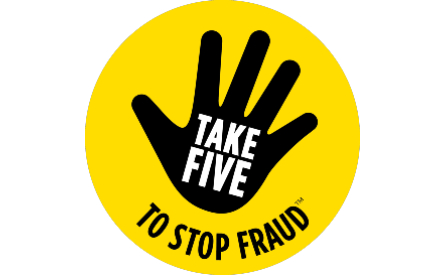- Fraudsters sell non-existent products at discounted prices to attract buyers. The victim intentionally makes a payment, but for products which do not exist and will never arrive.
- Criminals rely on the anonymity of the internet to advertise non-existent goods on websites (including auction sites) and social media.
- They’ve also been known to clone genuine websites or use paid advertising to lure customers to a fake website.
Overlay

Take Five to stop fraud
Take Five is a national campaign that offers straight-forward and impartial advice to help everyone protect themselves from preventable financial fraud. This includes email deception and phone-based scams as well as online fraud – particularly where criminals impersonate trusted organisations.
